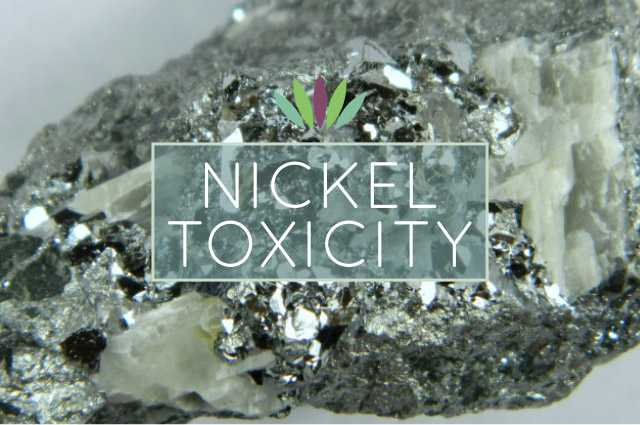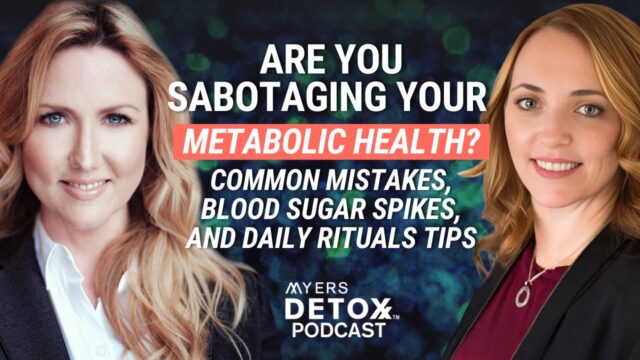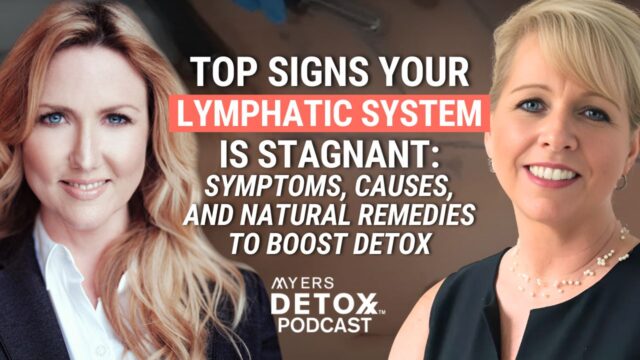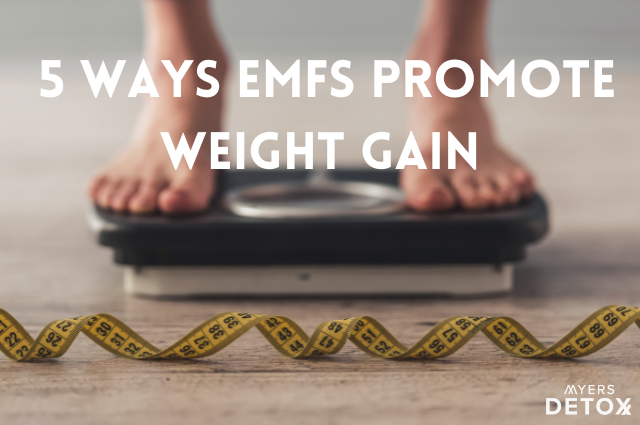Nickel is a toxic metal that enters the body through diet, inhalation, and skin contact. Learn nickel’s sources, symptoms and how to detox it from your body.
How You Are Exposed to Nickel
Nickel is in our air, our water, our soil, our food, even our cosmetics (1, 2). It may be inhaled, ingested, or simply come into uhysical contact with the eyes or skin (3). Due to these many types of possible exposure, nickel affects the body in many ways.
In testing clients, I find that almost every client has some level of nickel toxicity.
Industrial practices play a large part in the dispensing of nickel into our environment. Consider our air: nickel is found in ambient air at very low levels. This being a result of releases from oil and coal combustion, metal refining, sewage sludge, incineration, and manufacturing facilities (1).
But it doesn’t stop there. One study focusing on the nickel content of cosmetics found that, “although the target hazard quotients and the hazard indices suggest a measure of safety, cosmetics may add to the body burden of potential toxic metals after chronic exposure” (2).
You need to know the widespread sources of nickel so that you can monitor how it may be entering your body. These sources include:
- Air pollution from combustion of fossil fuels (1, 4)
- Batteries (1, 4, 5)
- Baking powder (4)
- Coins (1, 5, 8, 9)
- Cosmetics (2, 8, 10)
- Cookware (makes stainless steel shiny) (8)
- Dental restorations and orthodontics (8, 9, 24)
- Electroplating (1)
- Hydrogenated fats and vegetable oils (11)
- Imitation whipped cream (11)
- Industrial plumbing (1)
- Jewelry (5, 9)
- Machinery parts (1)
- Magnets (9)
- Margarine and imitation butter spreads (11)
- Mercury amalgam fillings
- Nickel-plated tools (4)
- Occupational exposure, primarily refining, electroplating, and welding (4, 9)
- Peanut butter, hydrogenated (11)
- Prostheses and surgical implants (like hip, knee, cochlear and cardiac implants) (8)
- Rooibos tea and any red tea (11)
- Shellfish like mussels and oysters (8,11)
- Stainless steel cookware and pots (5, 8, 9)
- Stent nets (8)
- Tobacco smoke (1, 8)
- Vegetable shortening (11)
- Water improperly filtered (1, 7)
Nickel can be found in plant-based food (1, 7). We need a small amount of nickel, so this is not a problematic source. Foods that contain nickel include legumes, nuts, grains, potatoes, grains, peas, and chocolate. It’s worth noting that while the major dietary source of nickel is plant foods, animal foods are actually quite low in nickel (8).
Knowing all of this, it’s not hard to see how we are exposed to nickel in our daily lives, often without realizing it! And while nickel is considered to be an essential nutrient needed for your body to run at its optimal level, you need to be aware of toxic forms and reduce toxic levels.
Symptoms of Nickel Toxicity
Too much exposure to this toxic metal places more pressure on our already over-burdened systems that are busy fighting off all the other toxins from our modern-day, industrial environment. Fortunately, nickel can be detoxed (7)! But if nickel is not cleansed from the body, it can lead to some pretty harmful results.
When researchers at Michigan State University conducted a study on nickel’s affect on the body, they found that it presented a multi-tiered toxic attack. First, nickel causes essential metal imbalances and severely disrupts enzyme action and regulation. It also contributes to a high amount of oxidative stress. (9)
Once it enters the body, nickel targets a number of organs, including the kidneys, lungs, and liver, and produces multiple toxic effects (9, 13). Some of these toxic symptoms include:
- Abdominal pain (6)
- Asthma (1)
- Blue color may appear on the skin (3)
- Bronchitis (1)
- Cancer – oral, lung, or intestinal (11)
- Cyanosis (6)
- Chronic Cough (6)
- Chronic Inflammation (24)
- Decreased lung function (1)
- Depression (11)
- Dizziness (3)
- Diarrhea (1, 6)
- Dyspnea, or difficulty breathing (6)
- Eczema (1)
- Fever (3)
- Gastrointestinal distress (1)
- Headache (3, 6)
- Heart attack (11)
- Heart palpitations (6)
- Hemorrhages (11)
- Insomnia (6)
- Itching (1, 3, 7)
- Irritability (6)
- Kidney damage and dysfunction (1, 11)
- Low blood pressure (11)
- Lung damage (1)
- Malaise (11)
- Muscle pain and tremors (11)
- Nausea (1, 6)
- Paralysis (11)
- Rash or nickel dermatitis consisting of an itching of the fingers, hands, and forearms (3)
- Respiratory distress or shortness of breath (3, 6, 9)
- Suicidal thoughts (11)
- Tachycardia (6)
- Tetany (11)
- Tightness in the chest (6)
- Vertigo (6)
- Visual disturbances (6)
- Vomiting (1, 6)
Health Conditions Caused by Nickel Toxicity
Nickel is the most common metal allergen. This toxic metal has been known to trigger more delayed type T cell hypersensitive (allergy) reactions than any other (20); up to 15% of the population suffers from some form of nickel allergy and women are those most commonly affected (8). One study even revealed that nickel allergy has a contact allergy rate “of 20-40% of female population and only 3-5% of male population” (21).
If you are allergic to nickel, your nickel toxic symptoms will likely be far more severe than someone that is not allergic to nickel. If you suffer from a nickel allergy, it’s important to be aware that nickel ingested from nickel-contaminated foods or beverages, or eating with stainless steel cookware or utensils, may cause a flare of dermatitis. (8)
Nickel is a harmful carcinogenic substance (5, 9, 6, 7). Studies conducted by the International Agency for Research on Cancer (IARC) and the U.S. Department of Health and Human Services found that all nickel compounds (save one, metallic nickel) are human carcinogens (6). Researchers at the Dominican University of California have linked nickel exposure to breast cancer (9). That’s right, nickel toxicity can cause cancer!
As if cancer wasn’t enough, research put out by the New York University School of Medicine warned that chronic exposure to nickel has been connected with increased risk of cardiovascular disease, neurological deficits, developmental deficits in childhood, lung cancer, and high blood pressure (9).
Note that nickel also contributes to the development of autoimmune disease (18, 19, 23). In fact, environmental factors are increasingly being recognized as the silent perpetrators when it comes to allergic and autoimmune diseases. This includes the external pollutants of metals, as well as the metal ions released from dental restorations (or from other body implants), which can trigger inflammation (18).
But let’s dig deeper. A study on the immune effects of nickel conducted in Sweden had results indicating that nickel, “may contribute to the progression of target organ pathology in infection-induced diseases of an autoimmune and/or inflammatory character, such as diabetes and myocarditis” (22). Nickel causes autoimmune disease!
Perhaps the most comprehensive statement on the wide-reaching dangers of nickel came from scientists at the Environmental Health Research Unit of Al Ameen Medical College when referred to nickel as, “a known haematotoxic, immunotoxic, neurotoxic, genotoxic, reproductive toxic, pulmonary toxic, nephrotoxic, hepatotoxic, and carcinogenic agent” (6).
These are a few health conditions resulting from nickel toxicity:
- Apoptosis, or cell death (13)
- Autoimmune disease (18, 19, 24)
- Birth defects (9)
- Breast cancer (9)
- Death (3)
- Depression (11)
- Chronic Fatigue (8, 24)
- Fibrosis (9)
- Infertility (9)
- Lung cancer (1, 9)
- Miscarriage (6, 9)
- Nasal cancer (1)
- Nervous system defects (9)
- Pneumonitis (3)
- Renal edema (1)
Like all toxic substances, the adverse health effects of nickel on the human body depend on the route of exposure. For example, studies in both humans and animals have shown that the respiratory system to be the primary target of nickel toxicity if the metal is inhaled (6). But don’t forget, nickel can also cause illness related to the multiple systems, including the cardiovascular system (heart and blood vessels), immune system, respiratory system (from your nose to your lungs), and even the skin (5).
How to Support Your Body’s Natural Detox Mechanisms Against Nickel
An antagonist is an element that can help to push or detox a metal out of the body. The following elements work can work as antagonists of nickel and help facilitate the body’s natural excretion of it from your system:
- Vitamin C (11)
- DMSA
- DMPS
- Cilantro
- CitriCleanse grapefruit citrus pectin
- Garlic
- CytoDetox Zeolite
In fact, numerous reports have shown the positive effect of vitamin C as an antioxidant and scavenger of free radicals (6), which can reduce the toxic of nickel in the body.
Detecting Nickel Toxicity
If you think you’ve been exposed to this pollutant and may have high levels of it in your system, I recommended some testing to determine your level of exposure.
First, a Hair Tissue Mineral Analysis (HTMA). HTMA testing measures heavy metal and mineral concentrations in your hair, which is one of the most common places that heavy metals like to hide. It’s a good way to get a highly accurate snapshot of what’s going on in your body without invasive procedures or expensive scans.
The HTMA testing process is simple (you don’t even need to leave your house). You get a digital kit sent to your email, then you send in your hair sample, and get your results within a few weeks. Testing is both accurate and comprehensive –– an HTMA test will give you information about a wide variety of heavy metals, including nickel
Once you have your HTMA test results, you can look at them with a trained practitioner and come up with a personalized plan to support your body’s natural detoxification.
If you think you’ve been exposed to health hazards like nickel and it may be hiding in your system, order a Hair Tissue Mineral Analysis. From there, you can plan your next steps to reclaim your vitality.
I have found that many people have low levels of nickel on a hair mineral analysis but then have toxic levels on a urine metals push test. That’s why I always like to perform both tests to get a complete picture of one’s toxicity levels.
Another great method for detecting nickel is to perform a Urine Toxic and Essential Elements Test. The reason a urine test is so useful and provides meaningful results is that urinary excretion is the major route for the elimination of absorbed nickel (16).
Takeaway
If you are concerned about nickel toxicity, an HTMA is a great place to start. It can give you the information you need to address the root causes of physical and mental health issues. If you suspect you have a build-up of toxins or a micronutrient imbalance, or you have unexplained symptoms like brain fog, weight gain, fatigue, or hair loss, you will certainly benefit from getting an HTMA.
After a long search and after having worked with multiple labs, I send all of our hair samples to an internationally-recognized lab that is a world leader in HTMA laboratory services. They’ve run more than 100,000 tests, and they process hair samples without washing them, which sets them apart from many other labs (washing a sample removes minerals, which leads to inaccurate results for proper interpretation).
If you think you may have toxin build-up or a mineral imbalance and you want definitive, accurate data on your health, you can order your HTMA here.
Don’t wait to get the information you need to start healing today!
*These statements have not been reviewed by the FDA. A Hair Mineral Analysis (HTMA) is not intended to diagnose, treat, cure, reverse, or prevent any disease. It is not intended to replace any other medical test(s) that may be prescribed by your medical doctor.










